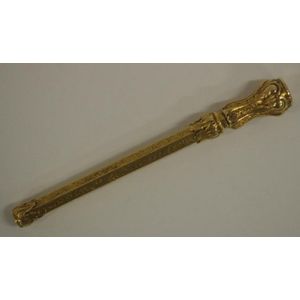Lloyd's Patriotic Fund Sword for Lieutenant Menzies, 1806
You must be a subscriber, and be logged in to view price and dealer details.
Subscribe Now to view actual auction price for this item
When you subscribe, you have the option of setting the currency in which to display prices to $Au, $US, $NZ or Stg.
- George Iii - George III (1738 - 1820) was King of Great Britain and Ireland from 1760 to 1820.
- Cornucopia - The cornucopia, literally the horn of plenty, is a symbol of abundance and wealth. It is traditionally is represented by a curved goat horn overflowing with grain and fruit.
Modern cornucopias are often depicted as horn-shaped baskets filled with food, and this symbol is often associated with the harvest. This decorative device has a long and ancient history, with roots in Greek mythology.
In one version, when Zeus was playing with the goat Amalthea he accidentally broke off one of her horns. To atone for this, Zeus promised Amalthea that the horn would always be full of whatever fruits she desired. This became the cornucopia of the Roman goddess Copia, the personification of plenty. Other goddesses, including Fortuna and Pax, also held the cornucopia.
In furniture and decorative arts, cornucopia as a decorative element have been popular since the 16th century and can be found on items as diverse as light fittings and candelabra to clocks, sculpture and statuary and furniture.
In ceramics, cornucopia shaped vases were popular in the 19th century, in singles and pairs.
This item has been included into following indexes:
Visually similar items

A Japanese Meiji period kiseru pipe holder, carved in bone as a pair of curved long handled pliers highlighted with a clambering oni demon figure in relief, signed with character marks to a side tablet. Provenance: The Flower Family Collection. Length 20 c

18ct gold Sampson Mordan retractable pencil, not marked but tests as 18ct gold

Large silver and marcasite leaf shaped brooch marked STG SIL HAWKE, with another small marcasite brooch

A Mameluke sword, marine ivory handle with finely engraved scabbard, early to mid 19th century, 95 cm
